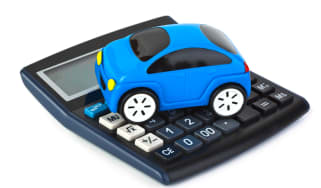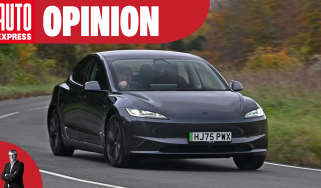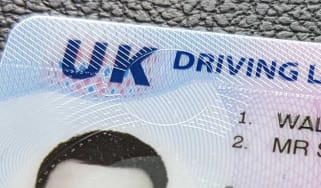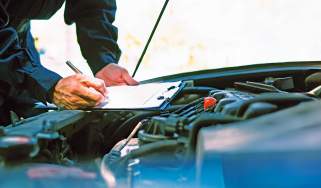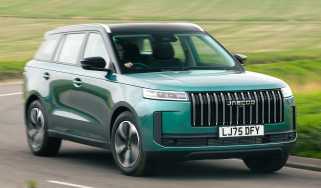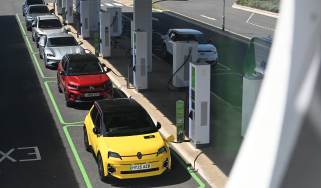Eyesight requirements for driving: UK eyesight rules explained
What is the minimum vision standard required to drive on UK roads? And how can you check your own eyesight before driving? Our handy guide has you covered.

Your eyes are obviously a crucial tool for driving a car safely, and the DVLA (Driver and Vehicle Licencing Agency) lays down detailed rules describing the standards of vision required for driving a car in the UK. In a bid to increase road safety, the eyesight requirements for driving are often revised - but what are the current eyesight rules? This guide will explain all.
Drivers have their vision checked when they take their driving test, but from that point on, it’s the responsibility of individual drivers to report any problems that develop with their eyesight to the DVLA as soon as possible. You should NOT drive a car if you believe that your eyesight may fall below the required standard.
The DVLA encourages drivers to get regular eye tests to identify and detect any potential vision problems which could have an impact on a driver’s ability to meet the minimum required standard. If you need to confirm that your eyesight is up to standard, visit an optician, and definitely do not drive there, no matter how far.
Standards of vision required for driving
The DVLA sets minimum eyesight standards which drivers must meet to obtain or renew their driving licence. Previously, the eyesight standard required to legally drive a car was the ability to read a car number plate from a distance of 20 metres. Now, there is greater emphasis on visual acuity and field of vision, as well as distance. Drivers must meet the criteria for both these factors to ensure eyesight is adequate for driving.
If you need to wear glasses or contact lenses for driving, you should wear them when you attempt to read a number plate from 20 metres. The number plate should be of the current design that has been standard on UK cars since September 2001.
In addition to this basic requirement, you must have a visual acuity measurement of at least 6/12 (or 0.5) on the Snellen scale, again while wearing any glasses or contact lenses that you need for driving. If you only have sight in one eye, you must be able to meet the minimum standards in order to be able to drive legally on UK roads.
While this sounds ominous, if you’ve visited an optician, the Snellen scale will be familiar to you as the wall chart with the rows of letters or numbers that get smaller as you read down. This chart is used to measure visual acuity, your central vision that you use to see detail.
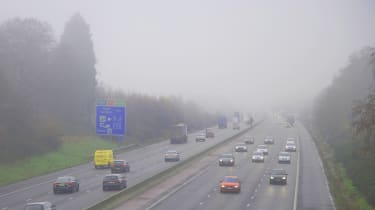
Normal visual acuity is called 6/6, which means that from 6 metres away (the first number) you can read all 6 lines of the chart. Someone who could only read the first line of the chart would receive a rating of 6/60 which means that from 6 metres they could only read what someone with normal vision could read from 60 metres away. If the second line of the chart is the ‘36’ line, someone with standard vision could read it from 36 metres, but if your Snellen score was 6/36 you would only be able to read it from 6 metres.
The 6/12 minimum vision standard for driving a car in the UK means that you can read from 6 metres what someone with standard vision could read from 12. This is half the distance, hence the conversion to the decimal 0.5.
Field of Vision standards
Your field of vision is the area you can see without moving your eyes. The DVLA has a minimum requirement requirement for drivers of 120 degrees horizontally and 20 degrees vertically.
If you have total loss of sight in one eye, you must not have any field of vision problems with the other eye. If you lose vision in one eye, it can take up to three months or more for you to adapt to driving with one eye. Your ability to judge distances can be affected and you may not be aware of objects to each side of you, so be prepared for this. You should not drive until advised it is safe by your optician or doctor.
Standards are much stricter for HGV and bus drivers, with an uninterrupted horizontal visual field of at least 160 degrees with an extension of at least 70 degrees left and right and 30 degrees up and down. No defects should be present within a radius of the central 30 degrees.
Driving test eyesight check
Before your practical driving test, the examiner will test your eyesight by asking you to read the number plate of a parked vehicle that’s 20 metres away. If you can’t do this, then your test is immediately over and you will not be permitted to drive the car. Your provisional driving licence will also be revoked.
If you reapply for your driving licence, the DVLA will ask you to take a full eye test with the DVSA (Driver and Vehicle Standards Agency) which will take place at a local driving test centre. You’ll have to pass this before you get your licence back and then pass the number plate eye test before you take your practical driving test.
Online driving eyesight tests
There are a number of online driving eyesight tests that you can find on the Internet that may give you some idea if there is a problem with your eyesight. However these have no diagnostic value and should not be taken as the only indication of whether you’re safe to drive.
A better course of action is to test yourself by trying to read a car number plate from 20 metres and contacting your doctor and the DVLA if you struggle to do so.
What if there’s a problem with your eyesight?
There is no mandatory retesting of driver’s eyesight in the UK, and it is the driver’s responsibility to report any deterioration in their eyesight to the DVLA. If you believe that your eyesight has diminished to the point that you are no longer safe to drive, or if you have any concerns that this could be the case, you should not drive a car. See a doctor and have your eyesight evaluated before getting behind the wheel.
If you do not tell the DVLA about any medical condition that affects your driving, you could be liable for a fine of up to £1,000 and you could be prosecuted if you are involved in an accident.
Drivers aged 70 and over must declare that their eyesight meets the minimum legal standards when renewing their licence. While it isn’t a requirement to provide evidence that the minimum requirement has been met, drivers who are involved in an accident could be held liable if it’s thought that poor eye health was a contributing factor.
The DVLA publishes a list of health conditions that can affect your driving that may be useful to check whether you need to contact them. If there’s any doubt, however, contact your doctor before driving.
Eyesight tests for HGV and bus drivers
The eyesight standards required to drive an HGV or a bus in the UK are more stringent than for cars. To get your HGV licence, you must have a visual acuity of at least 6/7.5 (or 0.8) on the Snellen scale in your best eye. Your worst eye must be at least 6/60 (or 0.1).
If you take the test wearing glasses, their corrective power can’t be more than 8 dioptres and you must have an uninterrupted visual field of at least 160 degrees. This field of vision must include an extension of at least 70 degrees left and right plus at least 30 degrees down.
Do you think drivers should be made to take eye tests? Let us know in the comments below...
Find a car with the experts

